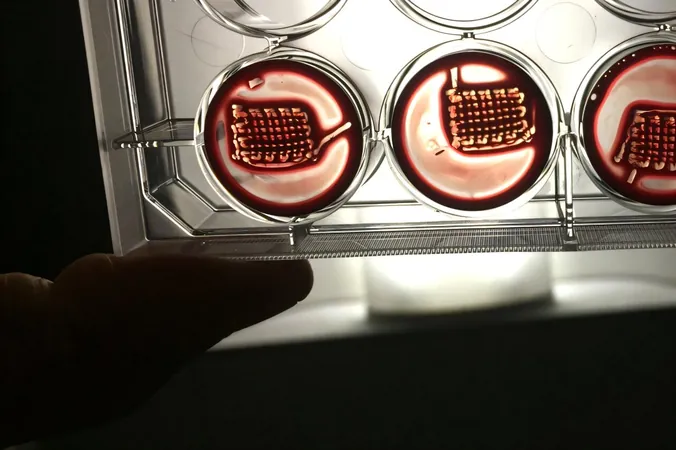
Revolutionary Breakthrough: Scientists Transform Blood into Regenerative Materials for Custom 3D-Printed Implants!
2024-11-17
Author: Jia
Groundbreaking Development in Regenerative Medicine
In a groundbreaking development, scientists have unveiled an innovative "biocooperative" material derived from blood, demonstrating remarkable potential in healing bones and heralding a new era of personalized regenerative medicine. This breakthrough could revolutionize therapeutic approaches for various injuries and diseases, offering tailored solutions for patients.
Research and Methodology
Researchers from the University of Nottingham's Schools of Pharmacy and Chemical Engineering have leveraged peptide molecules to craft living materials that significantly bolster tissue regeneration. Their findings, recently published in the prestigious journal *Advanced Materials*, showcase how these advancements could redefine the future of medical treatments.
The Role of Regenerative Hematoma
Our bodies possess an incredible ability to mend small ruptures and fractures through a complex healing process. Central to this process is the formation of a solid regenerative hematoma (RH)—a dynamic microenvironment created from liquid blood that plays a critical role in orchestrating tissue repair. This rich environment is home to various cells and macromolecules that work in tandem to facilitate healing.
Self-Assembling Technique
The research team has pioneered a self-assembling technique that combines synthetic peptides with whole blood drawn from the patient. This ingenious method mimics the natural regenerative hematoma while simultaneously enhancing its structural and functional properties. By employing this approach, they have successfully engineered materials that uphold the essential behaviors of platelets and the natural recruitment of growth-promoting cells crucial for healing.
Compatibility with 3D Printing Technology
What’s even more exciting? These revolutionary materials boast compatibility with 3D printing technology, allowing for precise manipulation and assembly that retain the natural functions of the blood-derived environment. In animal model tests, they have proven effective in repairing bone using the animal's own blood, showcasing their potential for human applications.
Expert Insights
Professor Alvaro Mata, a leader in the field of Biomedical Engineering and Biomaterials at the University of Nottingham, expressed his enthusiasm: "For years, scientists have tried to recreate the intricate natural regenerative environment synthetically. Our approach is groundbreaking because we work with biology rather than attempting to replicate it. This 'biocooperative' strategy paves the way for the development of regenerative materials that tap into the body’s inherent healing mechanisms." Co-author Dr. Cosimo Ligorio highlighted another pivotal advantage: “The ability to transform a person's blood into highly regenerative implants is incredibly exciting. Blood is readily available, cost-effective, and can be drawn in significant amounts, making this approach both practical and innovative.”
Implications for Future Healthcare
As the field moves forward, the implications of this research could be profound, paving the way for personalized medical solutions that rely on the unique biochemical makeup of each patient, ultimately changing how we approach injury treatment and disease management. Stay tuned to learn how this striking advancement could soon impact healthcare on a global scale!




 Brasil (PT)
Brasil (PT)
 Canada (EN)
Canada (EN)
 Chile (ES)
Chile (ES)
 España (ES)
España (ES)
 France (FR)
France (FR)
 Hong Kong (EN)
Hong Kong (EN)
 Italia (IT)
Italia (IT)
 日本 (JA)
日本 (JA)
 Magyarország (HU)
Magyarország (HU)
 Norge (NO)
Norge (NO)
 Polska (PL)
Polska (PL)
 Schweiz (DE)
Schweiz (DE)
 Singapore (EN)
Singapore (EN)
 Sverige (SV)
Sverige (SV)
 Suomi (FI)
Suomi (FI)
 Türkiye (TR)
Türkiye (TR)